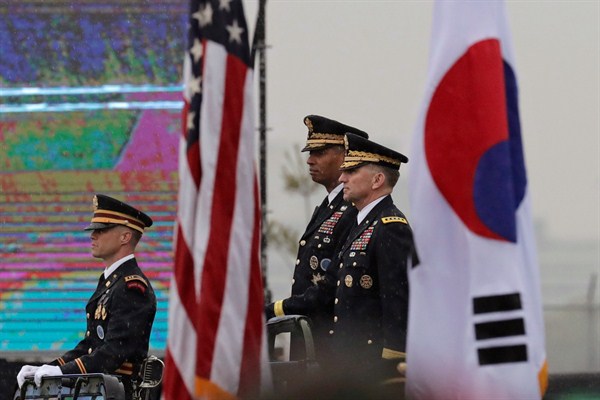Amid the ongoing U.S. government shutdown, soon to be the longest in American history, another recent lapse in funding has received far less attention but could be just as consequential. On Jan. 1, an important cost-sharing defense agreement, dictating how much money the South Korean government pays to support the U.S. military presence in the country, expired. No replacement text has been agreed to and negotiations are reportedly deadlocked due to President Donald Trump’s demands that Seoul shoulder a much larger portion of the stationing costs.
The situation casts uncertainty on the future of the 28,500 U.S. troops in South Korea, who play an important deterrent role, not only against North Korean aggression but also against an increasingly assertive Chinese military. The dispute also puts a strain on U.S.-South Korea relations as the two allies seek to reboot stalled nuclear talks with North Korea.
At issue is the so-called Special Measures Agreement, or SMA, which establishes the South Korean government’s financial contribution to offset the non-personnel cost of maintaining the U.S. military presence on the peninsula. In 2018, Seoul paid roughly $860 million, almost half of total stationing costs. But Trump is asking for a 50 to 100 percent increase, an unprecedented demand that would be difficult, if not impossible, for the South Koreans to swallow.

